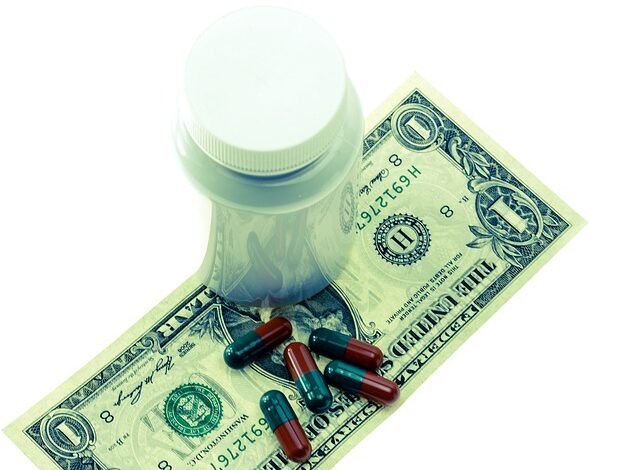How to Get Prescription Drug Coverage in Singapore

Singapore is renowned for its world-class healthcare system, which combines public and private sectors to provide affordable and high-quality medical services. However, prescription drug coverage is not automatically included in all healthcare plans, and understanding how to access affordable medications can be crucial for residents and expatriates alike. In this article, we’ll explore the various ways to obtain prescription drug coverage in Singapore, including government subsidies, private insurance options, and cost-saving strategies.
Understanding Singapore’s Healthcare System
Before diving into prescription drug coverage, it’s important to understand the basics of Singapore’s healthcare model. The system operates on a dual framework:
- Public Healthcare: Managed by the Ministry of Health (MOH) and delivered through polyclinics and public hospitals.
- Private Healthcare: Offered by private clinics, hospitals, and specialists.
Singaporeans and Permanent Residents (PRs) benefit from subsidized care at public facilities, while expatriates and non-residents typically rely on private healthcare or international insurance plans. Prescription drugs are available at both public and private pharmacies, but costs can vary significantly depending on your coverage and where you seek treatment.
Public Prescription Drug Coverage in Singapore
1. Medisave
Medisave is a national savings scheme that allows Singaporeans and PRs to use their Central Provident Fund (CPF) accounts to pay for approved medical expenses, including prescription medications. While Medisave doesn’t cover all drugs, it can be used for chronic conditions under specific programs like the Chronic Disease Management Programme (CDMP) .
- Eligibility: Singapore Citizens (SCs) and PRs with sufficient CPF balances.
- Conditions Covered: Diabetes, hypertension, asthma, and other chronic illnesses.
- Limitations: There are annual withdrawal limits, so expensive medications may require additional funding.
2. MediShield Life
MediShield Life is a universal health insurance scheme that provides basic coverage for large hospital bills and certain outpatient treatments, including some prescription drugs. It’s mandatory for all SCs and PRs.
- Coverage: Includes medications prescribed during hospital stays and certain costly outpatient treatments.
- Co-Payment: Patients typically pay a portion of the costs, with MediShield covering the remainder up to claim limits.
3. CHAS (Community Health Assist Scheme)
CHAS offers subsidies for outpatient care, including prescription medications, at participating General Practitioner (GP) clinics and dental clinics.
- Eligibility: Singaporean citizens with household incomes below specified thresholds.
- Benefits: Subsidized rates for common medications and chronic disease management.
4. Pioneer Generation (PG) and Merdeka Generation (MG) Packages
These schemes provide additional support for elderly Singaporeans, including subsidies for prescription drugs.
- Eligibility: Based on age and citizenship status.
- Benefits: Significant discounts on medications and healthcare services.
Private Health Insurance Options
For those seeking broader prescription drug coverage, private health insurance is an excellent option. Private plans often complement public schemes by offering enhanced benefits and flexibility.
1. Integrated Shield Plans (IPs)
Integrated Shield Plans combine MediShield Life with private insurance coverage, providing higher claim limits and access to private hospitals.
- Coverage: Includes prescription drugs prescribed during hospital stays and certain outpatient treatments.
- Optional Riders: Adding a rider can reduce co-payments and increase coverage for expensive medications.
2. Employer-Sponsored Insurance
Many employers in Singapore offer group health insurance plans that include prescription drug coverage. These plans vary widely, so it’s essential to review the policy details.
- Benefits: May cover medications not included in public schemes.
- Considerations: Coverage depends on the employer’s chosen plan.
3. International Health Insurance
Expatriates and high-net-worth individuals often opt for international health insurance, which provides comprehensive global coverage, including prescription drugs.
- Advantages: Flexibility to visit any doctor or pharmacy worldwide.
- Costs: Premiums can be high, but they offer peace of mind for frequent travelers.
Tips for Reducing Prescription Drug Costs
Even with insurance, some medications can still be expensive. Here are additional strategies to make prescriptions more affordable:
1. Use Generic Medications
Generic drugs are chemically identical to their brand-name counterparts but significantly cheaper. Ask your doctor or pharmacist if there’s a generic version of your medication.
2. Apply for Patient Assistance Programs (PAPs)
Some pharmaceutical companies and charities offer PAPs to help patients afford expensive medications. Eligibility criteria vary, so check directly with the manufacturer or relevant organizations.
3. Shop Around
Prices for the same medication can differ between pharmacies. Compare prices at public polyclinics, private clinics, and online platforms like Watsons or Guardian Pharmacy .
4. Take Advantage of Government Subsidies
If you qualify for CHAS, PG, or MG subsidies, ensure you’re utilizing them to their fullest potential. These programs can drastically reduce out-of-pocket expenses.
5. Ask About Discounts or Coupons
Some pharmacies and manufacturers offer discounts or coupons for specific medications. It never hurts to ask!



